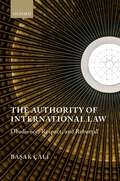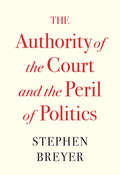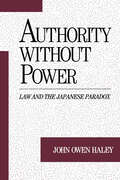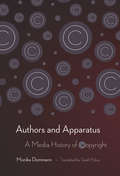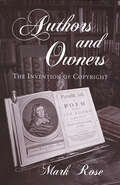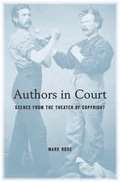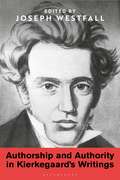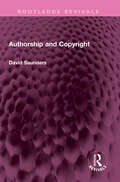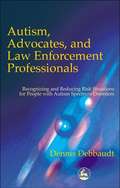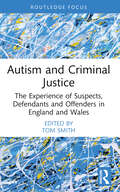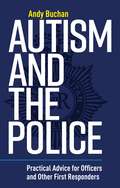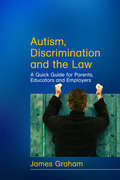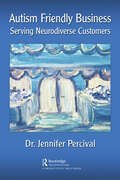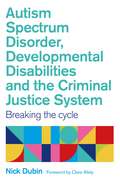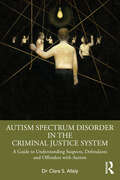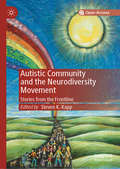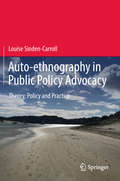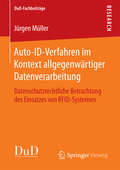- Table View
- List View
The Authority of International Law: Obedience, Respect, and Rebuttal
by Basak ÇaliThe question of the authority of international law over domestic authorities and the duties of state officials to international law are fundamental concerns in international legal theory and practice. The Authority of International Law: Obedience, Respect, and Rebuttal addresses these concerns by reframing the present accounts of authority in international law, construing its authority as imposing three different layers of duties on domestic officials: the duty to obey, the duty to respect, and the duty to rebut. The book provides an original interpretation of this authority - one that is not tied to prior state consent or domestic constitutional frameworks. It offers a nuanced account, arguing that whether or not international law is obeyed within any given situation depends on the type of duty it imposes on the state, and that duty's normative force. There is no strict framework in which international law always trumps domestic law or vice versa. Instead, Çalı presents a realistic account of when international law has absolute authority, and when it can afford a margin of appreciation to states. The Authority of International Law contributes to existing debates by considering the gap between consent-based jurisprudential theories of authority and self-interest and identity-based theories of compliance, and by considering monism, dualism, and normative pluralism as theories for addressing authority competition between domestic legal orders and international law.
The Authority of the Court and the Peril of Politics
by Stephen BreyerA sitting justice reflects upon the authority of the Supreme Court—how that authority was gained and how measures to restructure the Court could undermine both the Court and the constitutional system of checks and balances that depends on it. A growing chorus of officials and commentators argues that the Supreme Court has become too political. On this view the confirmation process is just an exercise in partisan agenda-setting, and the jurists are no more than “politicians in robes”—their ostensibly neutral judicial philosophies mere camouflage for conservative or liberal convictions. Stephen Breyer, drawing upon his experience as a Supreme Court justice, sounds a cautionary note. Mindful of the Court’s history, he suggests that the judiciary’s hard-won authority could be marred by reforms premised on the assumption of ideological bias. Having, as Hamilton observed, “no influence over either the sword or the purse,” the Court earned its authority by making decisions that have, over time, increased the public’s trust. If public trust is now in decline, one part of the solution is to promote better understandings of how the judiciary actually works: how judges adhere to their oaths and how they try to avoid considerations of politics and popularity. Breyer warns that political intervention could itself further erode public trust. Without the public’s trust, the Court would no longer be able to act as a check on the other branches of government or as a guarantor of the rule of law, risking serious harm to our constitutional system.
Authority without Power: Law and the Japanese Paradox (Studies on Law and Social Control)
by John Owen HaleyThis book offers a comprehensive interpretive study of the role of law in contemporary Japan. Haley argues that the weakness of legal controls throughout Japanese history has assured the development and strength of informal community controls based on custom and consensus to maintain order--an order characterized by remarkable stability, with an equally significant degree of autonomy for individuals, communities, and businesses. Haley concludes by showing how Japan's weak legal system has reinforced preexisting patterns of extralegal social control, thus explaining many of the fundamental paradoxes of political and social life in contemporary Japan.
Authors and Apparatus: A Media History of Copyright
by Monika DommannCopyright is under siege. From file sharing to vast library scanning projects, new technologies, actors, and attitudes toward intellectual property threaten the value of creative work. However, while digital media and the Internet have made making and sharing perfect copies of original works almost effortless, debates about protecting authors' rights are nothing new. In this sweeping account of the evolution of copyright law since the mid-nineteenth century, Monika Dommann explores how radical media changes—from sheet music and phonographs to photocopiers and networked information systems—have challenged and transformed legal and cultural concept of authors' rights.Dommann provides a critical transatlantic perspective on developments in copyright law and mechanical reproduction of words and music, charting how artists, media companies, and lawmakers in the United States and western Europe approached the complex tangle of technological innovation, intellectual property, and consumer interests. From the seemingly innocuous music box, invented around 1800, to BASF's magnetic tapes and Xerox machines, she demonstrates how copyright has been continuously destabilized by emerging technologies, requiring new legal norms to regulate commercial and private copying practices. Without minimizing digital media's radical disruption to notions of intellectual property, Dommann uncovers the deep historical roots of the conflict between copyright and media—a story that can inform present-day debates over the legal protection of authorship.
Authors and Owners: The Invention of Copyright
by Mark RoseThe notion of the author as the creator and therefore the first owner of a work is deeply rooted both in our economic system and in our concept of the individual. But this concept of authorship is modern. Mark Rose traces the formation of copyright in eighteenth-century Britain—and in the process highlights still current issues of intellectual property. Authors and Owners is at once a fascinating look at an important episode in legal history and a significant contribution to literary and cultural history.
Authors in Court: Scenes from the Theater of Copyright
by Mark RoseThrough a series of vivid case studies, Authors in Court charts the 300-year-long dance between authorship and copyright that has shaped each institution’s response to changing social norms of identity, privacy, and celebrity. “A literary historian by training, Rose is completely at home in the world of law, as well as the history of photography and art. This is the work of an interdisciplinary scholar at the height of his powers. The arguments are sophisticated and the elegant text is a work of real craftsmanship. It is superb.” —Lionel Bently, University of Cambridge “Authors in Court is well-written, erudite, informative, and engaging throughout. As the chapters go along, we see the way that personalities inflect the supposedly impartial law; we see the role of gender in authorial self-fashioning; we see some of the fault lines which produce litigation; and we get a nice history of the evolution of the fair use doctrine. This is a book that should at least be on reserve for any IP–related course. Going forward, no one writing about any of the cases Rose discusses can afford to ignore his contribution.” —Lewis Hyde, Kenyon College
Authors in Court: Scenes from the Theater of Copyright
by Mark RoseThrough a series of vivid case studies, Authors in Court charts the 300-year-long dance between authorship and copyright that has shaped each institution’s response to changing social norms of identity, privacy, and celebrity. “A literary historian by training, Rose is completely at home in the world of law, as well as the history of photography and art. This is the work of an interdisciplinary scholar at the height of his powers. The arguments are sophisticated and the elegant text is a work of real craftsmanship. It is superb.” —Lionel Bently, University of Cambridge “Authors in Court is well-written, erudite, informative, and engaging throughout. As the chapters go along, we see the way that personalities inflect the supposedly impartial law; we see the role of gender in authorial self-fashioning; we see some of the fault lines which produce litigation; and we get a nice history of the evolution of the fair use doctrine. This is a book that should at least be on reserve for any IP–related course. Going forward, no one writing about any of the cases Rose discusses can afford to ignore his contribution.” —Lewis Hyde, Kenyon College
Authorship and Authority in Kierkegaard's Writings
by Joseph WestfallAuthorship is a complicated subject in Kierkegaard's work, which he surely recognized, given his late attempts to explain himself in On My Work as an Author. From the use of multiple pseudonyms and antonyms, to contributions across a spectrum of media and genres, issues of authorship abound.Why did Kierkegaard write in the ways he did? Before we assess Kierkegaard's famous thoughts on faith or love, or the relationship between 'the aesthetic,' 'the ethical,' and 'the religious,' we must approach how he expressed them. Given the multi-authored nature of his works, can we find a view or voice that is definitively Kierkegaard's own? Can entries in his unpublished journals and notebooks tell us what Kierkegaard himself thought? How should contemporary readers understand inconsistencies or contradictions between differently named authors? We cannot make definitive claims about Kierkegaard's work as a thinker without understanding Kierkegaard's work as an author. This collection, by leading contemporary Kierkegaard scholars, is the first to systematically examine the divisive question and practice of authorship in Kierkegaard from philosophical, literary and theological perspectives.
Authorship and Authority in Kierkegaard's Writings
by Joseph WestfallAuthorship is a complicated subject in Kierkegaard's work, which he surely recognized, given his late attempts to explain himself in On My Work as an Author. From the use of multiple pseudonyms and antonyms, to contributions across a spectrum of media and genres, issues of authorship abound.Why did Kierkegaard write in the ways he did? Before we assess Kierkegaard's famous thoughts on faith or love, or the relationship between 'the aesthetic,' 'the ethical,' and 'the religious,' we must approach how he expressed them. Given the multi-authored nature of his works, can we find a view or voice that is definitively Kierkegaard's own? Can entries in his unpublished journals and notebooks tell us what Kierkegaard himself thought? How should contemporary readers understand inconsistencies or contradictions between differently named authors? We cannot make definitive claims about Kierkegaard's work as a thinker without understanding Kierkegaard's work as an author. This collection, by leading contemporary Kierkegaard scholars, is the first to systematically examine the divisive question and practice of authorship in Kierkegaard from philosophical, literary and theological perspectives.
Authorship and Copyright (Routledge Revivals)
by David SaundersFirst published in 1992, Authorship and Copyright traces the history of constructions of authorship as a legal reality. It offers an alternative to the two mainstream interpretations that have traditionally been assigned to authorship: the Romantic dialectical ‘birth of the author’ or the language-based post-structuralist ‘death of the author.’ Saunders examines the shortcomings of both schemes by arguing that they impose an arbitrary philosophical direction on the history of authorship and the law of copyright. Saunders addresses the issues relating to copyright and the construction of authorship as a legal status. Combining information and polemic, the author explores such matters as the historical and theoretical relations of copyright and the droit moral, the aestheticization of the law and the juridification of aesthetics, and the argument that authorship as a legal reality is a historically contingent and variable arrangement that cannot be separated from its cultural and juridical context. This book will be of interest to students of law, literature and philosophy.
Authorship and Copyright (Routledge Revivals)
by David SaundersFirst published in 1992, Authorship and Copyright traces the history of constructions of authorship as a legal reality. It offers an alternative to the two mainstream interpretations that have traditionally been assigned to authorship: the Romantic dialectical ‘birth of the author’ or the language-based post-structuralist ‘death of the author.’ Saunders examines the shortcomings of both schemes by arguing that they impose an arbitrary philosophical direction on the history of authorship and the law of copyright. Saunders addresses the issues relating to copyright and the construction of authorship as a legal status. Combining information and polemic, the author explores such matters as the historical and theoretical relations of copyright and the droit moral, the aestheticization of the law and the juridification of aesthetics, and the argument that authorship as a legal reality is a historically contingent and variable arrangement that cannot be separated from its cultural and juridical context. This book will be of interest to students of law, literature and philosophy.
Autism, Advocates, and Law Enforcement Professionals: Recognizing and Reducing Risk Situations for People with Autism Spectrum Disorders (PDF)
by Dennis DebbaudtIndividuals with developmental disorders are seven times more likely than other people to come into contact with police and their responses to encounters with the law may not always be socially appropriate. How can the needs and responses of people with autism spectrum disorders be reconciled with the duties of the police to serve and protect the community? In this book, private investigator and autism advocate Dennis Debbaudt provides essential information for both groups. He explains how typical manifestations of autism spectrum disorders, such as running away, unsteadiness, impulsive behavior or failure to respond, may be misunderstood by law enforcement professionals, with serious consequences. For individuals with ASDs, he offers advice on how to behave in encounters with police and other law enforcement professionals. Aimed at raising awareness and facilitating communication between people with autism and law enforcement professionals, this much-needed book will be a valuable resource for both communities.
Autism and Criminal Justice: The Experience of Suspects, Defendants and Offenders in England and Wales (Routledge Contemporary Issues in Criminal Justice and Procedure)
by Tom SmithThis collection presents a summary of current knowledge regarding autistic suspects, defendants and offenders in the criminal justice system of England and Wales. The volume examines the interaction between each stage of the criminal justice process and autistic individuals accused or convicted of crime, considering the problems, strengths, and possibilities for improving the system to better accommodate the needs of this vulnerable category of neurodiverse individuals. By explicating the core issues in this important but disparate area of study in a single place, the collection facilitates understanding of and engagement with knowledge for a wider audience of relevant stakeholders, including criminal justice practitioners, policy makers, academics and clinicians. It also incorporates key recommendations for improvement, thereby clarifying the urgent need for substantive change in policies and practices. The ultimate goal is to both improve the treatment and experience of autistic people subjected to criminal justice processes; and produce fairer, more appropriate systemic outcomes. While focused on the criminal justice system of England and Wales, the work will be valuable for researchers and policy-makers working in similar systems, as well as those interested in neurodiversity more generally.
Autism and Criminal Justice: The Experience of Suspects, Defendants and Offenders in England and Wales (Routledge Contemporary Issues in Criminal Justice and Procedure)
by Tom SmithThis collection presents a summary of current knowledge regarding autistic suspects, defendants and offenders in the criminal justice system of England and Wales. The volume examines the interaction between each stage of the criminal justice process and autistic individuals accused or convicted of crime, considering the problems, strengths, and possibilities for improving the system to better accommodate the needs of this vulnerable category of neurodiverse individuals. By explicating the core issues in this important but disparate area of study in a single place, the collection facilitates understanding of and engagement with knowledge for a wider audience of relevant stakeholders, including criminal justice practitioners, policy makers, academics and clinicians. It also incorporates key recommendations for improvement, thereby clarifying the urgent need for substantive change in policies and practices. The ultimate goal is to both improve the treatment and experience of autistic people subjected to criminal justice processes; and produce fairer, more appropriate systemic outcomes. While focused on the criminal justice system of England and Wales, the work will be valuable for researchers and policy-makers working in similar systems, as well as those interested in neurodiversity more generally.
Autism and the Police: Practical Advice for Officers and Other First Responders
by Andrew BuchanThis is a practical guide for police officers and other first responders written by an autistic retired policeman, designed to demystify autistic behaviours and improve the treatment of autistic people caught up in the criminal justice system. Police officers and other emergency services are the first to arrive at the scene of an incident and it is vital they can recognise autistic behaviours and respond accordingly to avoid any escalation. This book lays out how to identify whether someone could be autistic and how officers can interact with them effectively and sensitively. Based on the author's many years of experience as a police officer it covers common scenarios such as stop and search, restraint and transportation, interviews and detention. For each potential encounter the book provides strategies, examples and tips to assist police in interacting safely and fairly with autistic people. In addition to police interactions, the book explains how to best respond to and assist autistic people through the Criminal Justice System and beyond.
Autism, Discrimination and the Law: A Quick Guide for Parents, Educators and Employers (PDF)
by James Graham Nick GrahamAutism, Discrimination and the Law outlines how the legal requirements of the Disability Discrimination Act 1995 might be met for students and employees with autism spectrum disorders (ASDs). * What might discrimination against people with autism look like? * What can you do to prevent discrimination against people with autism? * What should you do if you have been discriminated against? The book includes an overview of current knowledge of autism, and details of the changes in legislation concerning disability discrimination. The main part of the book is devoted to case studies from further education and employment demonstrating how reasonable adjustments can be made successfully. This accessible book will be an essential reference for employers, policy makers, Local Education Authorities, Learning and Skills Councils, Training providers, schools and colleges, personnel officers, careers officers, charities, residential homes, parents, indeed anyone working with people with autistic spectrum disorders.
Autism Friendly Business: Neurodiverse Customers (Autism Friendly)
by Jennifer PercivalDesigned as a guidebook for leaders at the beginning of their journey embracing neuroinclusion, Autism Friendly Business: Neurodiverse Customers will provide business owners, executives, managers, team members, and associates the tools to integrate strategies and techniques that will enhance their business, while improving the delivery of a quality experience for all. Autistic individuals often experience barriers when engaging with businesses. This book provides solutions and examples on how leaders can remove obstacles to develop supportive and inclusive environments.
Autism Friendly Business: Neurodiverse Customers (Autism Friendly)
by Jennifer PercivalDesigned as a guidebook for leaders at the beginning of their journey embracing neuroinclusion, Autism Friendly Business: Neurodiverse Customers will provide business owners, executives, managers, team members, and associates the tools to integrate strategies and techniques that will enhance their business, while improving the delivery of a quality experience for all. Autistic individuals often experience barriers when engaging with businesses. This book provides solutions and examples on how leaders can remove obstacles to develop supportive and inclusive environments.
Autism Spectrum Disorder, Developmental Disabilities, and the Criminal Justice System: Breaking the Cycle
by Nick DubinFor autistic people who find themselves facing a criminal charge, understanding how the features of autism may have contributed to their behaviour can be vital context for their defence. In this insightful book, Nick Dubin explores how and why autistic people get caught up in the criminal justice system. He delves into what steps can be taken to prevent autistic people committing crimes and what should be done to ensure their fair and appropriate treatment if they are charged with a crime. It covers everything from prevention to the aftermath of sentencing, including available counselling and therapy. Nick's personal experience and meticulous research shows that criminal justice can be an oppressive system that misunderstands and stigmatizes autistic people, especially low-risk individuals and those with less criminal responsibility.
Autism Spectrum Disorder, Developmental Disabilities, and the Criminal Justice System: Breaking the Cycle
by Nick DubinFor autistic people who find themselves facing a criminal charge, understanding how the features of autism may have contributed to their behaviour can be vital context for their defence. In this insightful book, Nick Dubin explores how and why autistic people get caught up in the criminal justice system. He delves into what steps can be taken to prevent autistic people committing crimes and what should be done to ensure their fair and appropriate treatment if they are charged with a crime. It covers everything from prevention to the aftermath of sentencing, including available counselling and therapy. Nick's personal experience and meticulous research shows that criminal justice can be an oppressive system that misunderstands and stigmatizes autistic people, especially low-risk individuals and those with less criminal responsibility.
Autism Spectrum Disorder in the Criminal Justice System: A Guide to Understanding Suspects, Defendants and Offenders with Autism
by Dr Clare AllelyThis book focuses on autism spectrum disorder (ASD) in the criminal justice system. Rather than being the perpetrators of offending, individuals with ASD are more likely to be the victim of crime. However, there is nevertheless a small subset of individuals with ASD who do offend, and this book provides an in-depth understanding of how certain features of ASD may provide the context of vulnerability to engaging in a number of types of offending behaviours. Chapters focus on arson or fire-setting; cybercrime (e.g., hacking); online sexual offending such as the viewing of indecent child imagery; offline sexual offending; violent crime; stalking; terroristic behaviour (including radicalisation and extremism); bestiality or zoophilia and also extreme violence such as mass shooting and serial homicide. This book also outlines the ways in which a defendant with ASD may present in court and how they may exhibit behaviour which could be misinterpreted and perceived negatively leading to an unfair trial. Lastly, it discusses the need to identify the impact that ASD can have on the capacity to form the requisite criminal intent and offer appropriate court adaptions to support them during court proceedings. This book is ideal for criminal defense lawyers and practitioners in psychology, psychiatry, and social work as well as policy makers and reformers.
Autism Spectrum Disorder in the Criminal Justice System: A Guide to Understanding Suspects, Defendants and Offenders with Autism
by Dr Clare AllelyThis book focuses on autism spectrum disorder (ASD) in the criminal justice system. Rather than being the perpetrators of offending, individuals with ASD are more likely to be the victim of crime. However, there is nevertheless a small subset of individuals with ASD who do offend, and this book provides an in-depth understanding of how certain features of ASD may provide the context of vulnerability to engaging in a number of types of offending behaviours. Chapters focus on arson or fire-setting; cybercrime (e.g., hacking); online sexual offending such as the viewing of indecent child imagery; offline sexual offending; violent crime; stalking; terroristic behaviour (including radicalisation and extremism); bestiality or zoophilia and also extreme violence such as mass shooting and serial homicide. This book also outlines the ways in which a defendant with ASD may present in court and how they may exhibit behaviour which could be misinterpreted and perceived negatively leading to an unfair trial. Lastly, it discusses the need to identify the impact that ASD can have on the capacity to form the requisite criminal intent and offer appropriate court adaptions to support them during court proceedings. This book is ideal for criminal defense lawyers and practitioners in psychology, psychiatry, and social work as well as policy makers and reformers.
Autistic Community and the Neurodiversity Movement: Stories from the Frontline
by Steven K. KappThis open access book marks the first historical overview of the autism rights branch of the neurodiversity movement, describing the activities and rationales of key leaders in their own words since it organized into a unique community in 1992. Sandwiched by editorial chapters that include critical analysis, the book contains 19 chapters by 21 authors about the forming of the autistic community and neurodiversity movement, progress in their influence on the broader autism community and field, and their possible threshold of the advocacy establishment. The actions covered are legendary in the autistic community, including manifestos such as “Don’t Mourn for Us”, mailing lists, websites or webpages, conferences, issue campaigns, academic project and journal, a book, and advisory roles. These actions have shifted the landscape toward viewing autism in social terms of human rights and identity to accept, rather than as a medical collection of deficits and symptoms to cure.
Auto-ethnography in Public Policy Advocacy: Theory, Policy and Practice
by Louise Sinden-CarrollThis book explores how public policy advocacy can be used to approach policy issue identification, resolution or, at the least, support the management of wicked policy issues. By describing how this type of advocacy draws on participatory action research, including ethnographic and auto-ethnographic models, this book offers a tool for public policy consumer advocates on how to apply the Human Capabilities Approach to address presenting public policy issues worldwide. By applying these models to the situation of prisoners with hearing loss in New Zealand’s prisons, it identifies multiple causal factors for quality-of-life-limiting marginalization, e.g. social barriers (e.g. disability discrimination); environmental limitations (e.g. geographical and those introduced by incarceration); and individual responses in line with negative attitudes – both social and political, including the State’s denial of prisoners’ right to democratic participation by revoking their right to vote in general elections after sentencing. In addition, two other areas, namely blood safety and broadcast media captioning, are highlighted, showing that the skill of auto-ethnography is transferrable and can be applied to ensure effective consumer advocacy for a diverse range of issues that affect marginalized sectors.
Auto-ID-Verfahren im Kontext allgegenwärtiger Datenverarbeitung: Datenschutzrechtliche Betrachtung des Einsatzes von RFID-Systemen (DuD-Fachbeiträge)
by Jürgen MüllerAm Beispiel von RFID-Systemen werden die datenschutzrechtlichen Anforderungen an den Einsatz von Auto-ID-Verfahren unter den Bedingungen des ‚Ubiquitous Computing‘ untersucht. Differenziert nach Funktionsbereichen des RFID-Vorder- und RFID-Hintergrundsystems erläutert der Autor Bedingungen und Herausforderungen bei Vorgängen des Datenumgangs, bei der Verantwortlichkeit, den Zulässigkeitstatbeständen, den besonderen Transparenzanforderungen oder bei Betroffenenrechten. Dabei werden die Grenzen des geltenden Datenschutzrechts ausgelotet und Ansätze für dessen Weiterentwicklung vor dem Hintergrund einer sich zunehmend informatisierenden Welt diskutiert.
